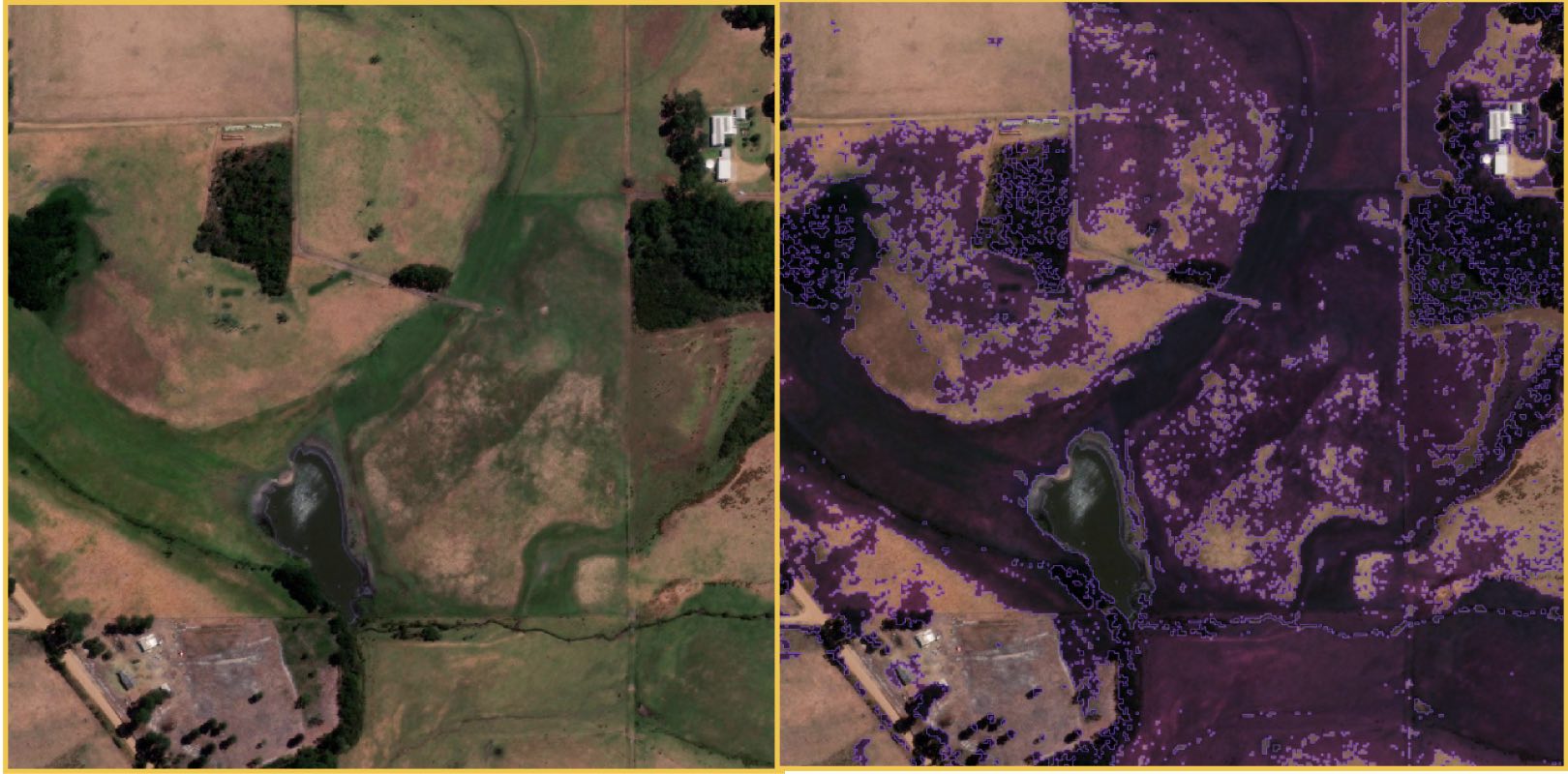Healthy Vegetation Mask¶
Last updated: March, 2022
Example imagery¶
This example shows a visual (RGB) 30cm GeoEye-1 image taken near Nornalup, Western Australia in February 2021. The image on the left is the original ARD tile. The image on the right displays an overlay of the binary raster for healthy vegetation pixels.

Left: Analysis-ready visual image. Right: Corresponding ARD visual image with the healthy vegetation mask in purple.
Overview¶
The Maxar ARD healthy vegetation mask identifies green, healthy vegetation from the multispectral image. Pixels that contain a mixture of bare earth and vegetation are also identified.
The algorithm is based on spectral and spatial properties of vegetation. Vegetation absorbs most of the light in the visible spectrum, and the cell structure of leaves strongly reflects near infrared light. Spectral indices, such as the well-known Normalized Difference Vegetation Index (NDVI), exploit this pattern to aid with identification of healthy vegetation in satellite imagery. The healthy vegetation mask is derived from thresholding the NDVI along with other spectral and spatial properties of vegetation.
| Mask title | File name | File type | Description |
|---|---|---|---|
| Healthy Vegetation Mask | {acquisitionID}-healthy-vegetation.tif | Raster GeoTiff | Binary raster indicating green, healthy vegetation pixels. |
| Healthy Vegetation Polygons | {acquisitionID}-healthy-vegetation-mask.gpkg | Vector GeoPackage | Polygons that indicate the detected boundaries of green, healthy vegetation. |
How to read the mask data¶
The vegetation mask is a binary raster, indicating the presence of green, healthy vegetation with the following values:
| Pixel value | Description |
|---|---|
| 0 | No green, healthy vegetation detected. |
| 1 | Green, healthy vegetation detected in the multispectral image. |
The vector layer is a set of multipolygons derived from the binary mask. Pixels that intersect or are contained within the mask are predicted to be covered by healthy vegetation.
Use Cases¶
The healthy vegetation mask is useful to identify vegetation for consistent scenes in mosaics (i.e., color balancing across parts). It may also be used for change detection or time series analysis.
Known Issues¶
Pixels that have some percentage of vegetation will be identified, but the percentage depends on the abundance and health of the vegetation. Healthier vegetation has higher NDVI values, which may offset lower abundances of vegetation in the pixel.